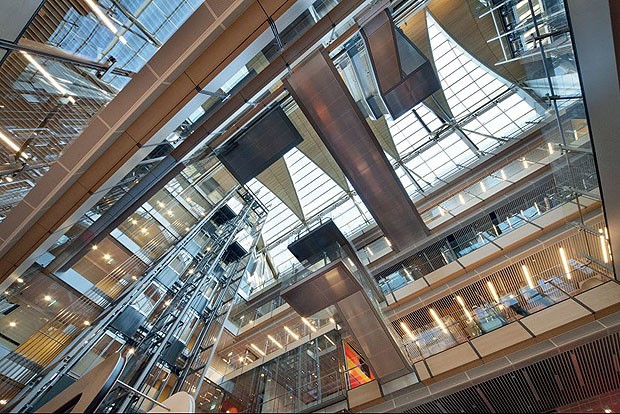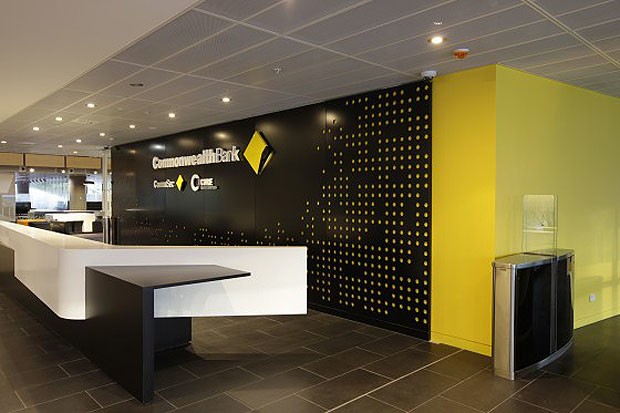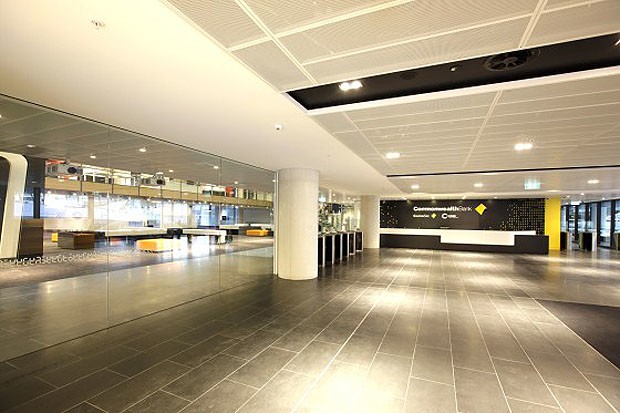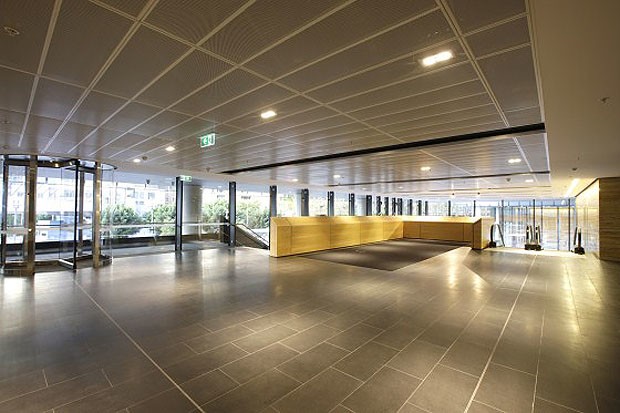This article is Part One in a series of metal ceiling tile articles looking at the advantages of the product through a variety of applications. Part Two threw questions at a ceiling expert and unveiled the specific uses and limitations of metal ceiling tiles. In Part Three we went back to an architect armed with new questions and to gain further insight into why metal pan ceiling tiles are a superior to other products in the same market. Part Four takes a final look at the types of metal pan ceilings and how they can achieve more than other solutions in the market.
Prized for their greater durability and easy maintenance, metal ceilings are becoming an increasingly attractive option for a wide variety of building applications, particularly in commercial projects.
Machined in a plethora of textures, patterns, shapes and design, most metal ceilings used in Australian buildings are made from electro-galvanised steel although they do come in other material including aluminium.
Their most common application is in a suspended grid system with rectangular clip-in boards, although metal’s resistance to warping and sagging means that they can be suspended in a variety of profiles and angles, such as rhomboid and triangular shapes.
Metal ceiling tiles were used recently to award-winning effect by Francis-Jones Morehen Thorp (FJMT) architects in the large commercial development Commonwealth Bank Place in the Darling Quarter Precinct, Sydney.
Sean McPeake from FJMT was on the design team and said his decision to choose metal ceilings—a variety of perforated tiles from SAS International—over other options such as mineral fibre boards and timber tiles was based on its compatibility with a chilled beam system, its durability, and its sleek, commercial appearance.
Moisture resistance

Being a passive chilled beam building, Darling Quarter depends on the convection of the warm air rising through the ceiling, circulating the chilled beam and then dropping back down through the ceiling as cold air.
Naturally this air contains a lot of moisture so there is a requirement that the ceiling be both perforated for the air to circulate through as well as impervious to moisture damage.
McPeake said that although a perforated timber tile could be used for chilled beam systems they do not benefit the same flexibility as a metal tile and ultimately the metal pan option was chosen on its reliability and looks for the Darling Quarter project.
Two perforation patterns of metal pan were accommodated at the Darling Quarter project according to their location on the building’s floorplate. McPeak explains that perimeter ceiling tiles, which see the most air convection, have a larger perforation.
“In any commercial building there is a perimeter zone where the heat gain is obviously higher and there is more air conditioning, and in our case a higher density of chilled beam, so the perforations need to be larger to accommodate this,” explained McPeake.
“In the middle of the floor plate where the heat gain was less, the boards were not as quite as perforated.”
Visual appearance

So if a client asked McPeake why he would choose metal ceilings over mineral fibre ceilings, how would he respond?
“We classify metal boards as a more expensive product but if a client was to ask why we would specify it we would say that until very recently it was superior in terms of its visual performance; it looks a little more sleek,” he said.
Maintenance, durability.

Another benefit is the metal tile’s easy maintenance, which McPeake says is minimal.
“There is this perception that they are durable and are still going to look good in 10 -15 years,” he said.
“There is also an expectation that there will be certain reconfigurations of offices over the lifetime of their tenancies and metal tiles, unlike plasterboard and mineral fibre tiles, can be taken down and moved around with no ensuing damage.”
Plasterboard and mineral fibre tiles are also more brittle and susceptible to water stains and discolouration. McPeake called attention to anyone who has worked in an office building to the common water marks and “unpleasant smell” that occur due to small air-conditioning leaks.
Limitations

As metal pan ceiling tiles are a more expensive solution than mineral fibre boards, they might not be suitable for all budgets.
The product’s characteristics also render it unsuitable for most residential projects.
“It got a certain commercial quality and its place is in institutional and commercial buildings; buildings with that certain sort of nature,” McPeake explained.
“You’d certainly choose a mineral fibre tile or plasterboard option in a residential application.”
He also explains why it is inappropriate for home renovation projects:
“It’s not the sort of thing that Joe Blogs is going to be able to install with a Stanley knife and a pair of pliers, and you have to have it installed properly by professionals with the right tools.”
Images: FJMT and SAS International.

